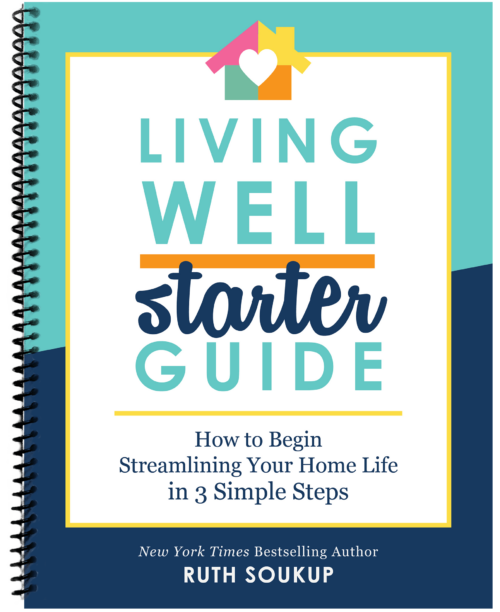What could you do with an extra $10,000? It might not be as hard as you think! Don’t miss these helpful and practical ways to save $10,000 this year.
If you could Save $10,000 what would YOU do?
Would you spend it on gifts for the people you love? Splurge on an amazing vacation? Treat your self to a deluxe spa day and a new wardrobe? Use it as a down payment on a new car?
Or would you use it to build financial security? If you could save $10,000, it would be enough to build a real emergency fund, make a big dent in your debt, or be great seed money for starting a business.
Regardless of how you plan to spend it, $10,000 is a great goal to aim for this year.
And while saving that amount of money in just one year may seem like a daunting prospect, I promise that it is absolutely doable. In fact, with some smart planning, budgeting and yes, a few sacrifices, you could have that balance in your bank account one year from today.
Here’s how to save $10,000 this year
Start Smart
Your first step is to make sure you’ve got a “baby” emergency fund of $1000 in place that will help you cover any surprise expenses that pop up — the dog is sick and needs to go to the vet, the car has a flat tire, the coil burned out on your water heater, etc. This fund covers all those oops moments that would’ve had you reaching for the credit card in the past. If you don’t yet have an emergency fund, here’s how to save that first $1,000.
The next step is to pay down your debt. While of course, it’s important to save — and $10,000 is a great goal — don’t start socking away $10,000 while creditors are knocking down your door. The interest rate on savings won’t make up for the money you’re losing to debt collectors, especially on credit cards, small loans, and medical bills. Get yourself on an even playing field with solid financial footing first.
Once your debt’s under control or paid off to a point you’re comfortable with, then it’s time to start!
You might be thinking, “Great, but my income barely covers my bills, how do I find wiggle room for savings?”
Get Serious About Budgeting
Sit down and take a hard look at your monthly budget. If you aren’t feeling budget savvy or if you need a refresher course, try using our budget worksheet to examine your budget and check out our Financial Rescue Pack for practical tips on how to save.
Check with your tax accountant to ensure you’re withholding the right amount on your taxes or use this IRS publication to assess. If you feel you need to allocate money towards your savings, rather than paying above your employer match on your 401(k) or toward the principal on your mortgage, then you may need to make a change. Consider refinancing your home if your interest rate isn’t competitive.
Watch your budget for any flexibility. It’s time to examine areas like your phone plan (dump your landline), your insurance, and other high-cost areas like utilities. If it’s been over a year since you examined your budget for areas that could use tightening, roll up your sleeves and start making phone calls and cuts.
Are you making any budget mistakes you need to resolve? Are there subscriptions you can cancel? Can you cut out cable, let go of your high-speed internet, or gym membership? Even the best budgeters can find ways to tighten use on utilities, cut out memberships, or find alternative ways to save. An average savings of $25 on six of your monthly bills will save you $1800 a year!
The key to successful budgeting is consistency. You can’t just do it once and call it good. It is something you need to revisit and reevaluate every single month. This is exactly why our The Living Well Planner® includes a full 2-page budget spread for every month to help you stay on top of your finances so YOU can tell your money where to go!
Go on a Spending Freeze
If you commit to the goal of $10,000, kick-off your plan with a month of zero spendings! It will get you into the “savings mindset” and help you build momentum toward your goal. Take our 31 Day No Spend Challenge and see how much you can save by simply cutting out all peripheral spending for a month. This means no gourmet coffees, hair appointments, or trips to the store for a little something. It also means at the end of the challenge you’ll have a new approach to spending and the way you view savings.
Aiming for four “no spend” months throughout the year can help you in leaps and bounds to hit your goal. On average, cutting out peripheral spending, eating at home, finding free activities and smart ways to save on things you need (like bartering and recycling) can save you $500-$1,000 a month. Do it four times and you’re $4,000 closer to your goal.
Save on Food
While you’re freezing on spending, you may find freezer cooking to be of extreme benefit as well. Eating at home is one of the best ways to save money. Restaurants can be fun, delicious and wonderful experiences, but the markup on food costs is shocking. Cooking meals at home, bagging your family’s lunches and planning snacks ahead will save you surprising amounts of money.
There are also many ways to save on your groceries — even cut your grocery bill in half. In the months you do a spending freeze, eat what you have on hand, enjoy your freezer meals, and plan ahead. During the months you’re spending, plan with coupons, sales matching, stocking up on staples, eating less meat and meal planning to make your grocery dollars stretch and stretch.
It may sound lofty and I’ll admit when I first started it was all a little intimidating, but once you get going, the prospect of saving money on food gets fun and a little addicting! You’ll find yourself delighted when the cashier tells you the total for your cart full of groceries costs less than a quarter of what you used to spend. I’ve actually giggled out loud in the grocery line. If you save $750 a month through careful planning, for the eight months you’re spending, you can save $6,000 over the year.
Save on Extras
Planning ahead for things like gifts and parties and getting thrifty helps. Saving is hard, but it doesn’t mean life should be joyless and miserable. There are still ways to throw fabulous parties on a budget, make gifts from home, and learn how to decorate on a shoestring. Yes, it’s a little more work than running to the store or shelling out for the latest item, but in the end, it’s more satisfying and rewarding.
Look for areas where you can make thrifty choices, like buying the cheapest paper towel, opting for an at-home car wash, dying your hair at home, and buying items second-hand. Clean out your house and organize the items you have stored away to eliminate “panic buying” when you think you’re out of light bulbs or batteries.
This is also the time to learn minor repairs. Can you fix something small on the car or replace the fluids? Are you paying someone to mow your lawn? Can you swap babysitting with a neighbor? Don’t pay someone to do something you can do yourself. Yes, it might be more convenient, but over the next year, vow to DIY as much as you can.
Are there other entertainment plans you can forgo or maybe put off your vacation plans? Can you deal with your clunker car for another year or dust off your bike and commute to work when the weather’s nice? Even a carpool can save you hundreds in gas over the course of a year (and hey, it’s better for the environment)! By trading extras, doing it yourself, or making do, you can save $100-$200 a month (at least), which means another $2,400 saved this year.
Earn Extra Money
If you’ve done everything above, you should have a plan to hit your $10,000 goal this year, or even exceed it. Let’s say, though, you’re still thinking, “But I am already doing ALL these things, and I still can’t find any room to save.” The answer? Maybe it’s time to consider new ways to earn extra money.
Many of us have talents and resources we’re under-utilizing. Even picking up an evening job a few nights a week can help you make ends meet if you’re struggling. There are also many ways to earn money from home. Consider your talents and your previous experience. I never believed I could earn a living and support my family through blogging (and it’s an incredible privilege I am grateful for every day), but I knew I could try to generate some supplemental income and that’s how I got started.
If you aren’t sure you can commit to a job from home, get yourself signed up with a few easy ways to earn money online by doing things you’re already doing. A surprising number of companies offer ways to earn by doing things like watching videos, filling out surveys, or using their sites to search and shop. They may not generate hundreds and hundreds of dollars, but it can help bring in a little extra to help you meet your savings goals.
Revisit Your Plan Often to Save $10,000 this Year
If you’re serious about your goal, you have to keep your “eye on the prize.” Literally. Revisit your goal often and assess your budget and bank account weekly to make sure you’re staying on track. Worksheets, journals and organizational tools can help you hold the edge on your plan and ensure money doesn’t fall through the cracks.
Our Financial Rescue Pack is a great way to get started on the right track. With jam-packed useful tips and practical strategies that you can start using right away, it will help you start saving money immediately.
To save $10,000 is a lofty goal, but it’s not unrealistic for many of us if you employ some smart strategies and start living more within your budget and means. Remind yourself of the reasons you want to save and regularly take a moment to think of the peace and relief you will feel when you meet your goal. While it’s fun to imagine the things we would spend an “extra” $10,000 on, the biggest satisfaction comes from being able to keep your family safe and cared for, and having enough so you can help the important people in your life.
Keeping that focus in mind will help you meet your goal to save $10,000 this year!
Overwhelmed by debt? Seeing those bills pile up each month can be scary, especially when you don’t have a plan to dig yourself out of the hole.
To recap, here’s how to save $10,000 this year
- Start Smart
- Get Serious About Budgeting
- Go on a Spending Freeze
- Save on Food
- Save on Extras
- Earn Extra Money
- Revisit Your Plan Often to Save $10,000 this Year
PIN FOR LATER
TAKE BACK CONTROL OF YOUR HOME LIFE
 Ever feel like you just can't keep up? Our Living Well Starter Guide will show you how to start streamlining your life in just 3 simple steps. It's a game changer--get it free for a limited time!
Ever feel like you just can't keep up? Our Living Well Starter Guide will show you how to start streamlining your life in just 3 simple steps. It's a game changer--get it free for a limited time!
If you love this resource, be sure to check out our digital library of helpful tools and resources for cleaning faster, taking control of your budget, organizing your schedule, and getting food on the table easier than ever before.











Budgeting consistently (every month!) has been the key to reaching our savings goals. Seeing how far we’ve come—and how far we have to go—is super motivating!